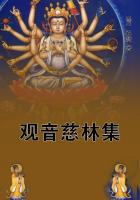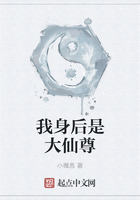cornuta, LATR., and O. Latreillii, SPIN.), all of whom gave me splendid results, with reed-stumps arranged either against the walls of my garden, as I have just said, or near their customary abode, the huge nests of the Mason-bee of the Sheds. One of them, the Three-horned Osmia, did better still: as I have described, she built her nests in my study, as plentifully as I could wish, using reeds, glass tubes and other retreats of my selecting for her galleries.
We will consult this last, who has furnished me with documents beyond my fondest hopes, and begin by asking her of how many eggs her average laying consists. Of the whole heap of colonized tubes in my study, or else out of doors, in the hurdle-reeds and the pan-pipe appliances, the best-filled contains fifteen cells, with a free space above the series, a space showing that the laying is ended, for, if the mother had any more eggs available, she would have lodged them in the room which she leaves unoccupied. This string of fifteen appears to be rare; it was the only one that I found. My attempts at indoor rearing, pursued during two years with glass tubes or reeds, taught me that the Three-horned Osmia is not much addicted to long series.
As though to decrease the difficulties of the coming deliverance, she prefers short galleries, in which only a part of the laying is stacked. We must then follow the same mother in her migration from one dwelling to the next if we would obtain a complete census of her family. A spot of colour, dropped on the Bee's thorax with a paint-brush while she is absorbed in closing up the mouth of the tunnel, enables us to recognize the Osmia in her various homes.
In this way, the swarm that resided in my study furnished me, in the first year, with an average of twelve cells. Next year, the summer appeared to be more favourable and the average became rather higher, reaching fifteen. The most numerous laying performed under my eyes, not in a tube, but in a succession of Snail-shells, reached the figure of twenty-six. On the other hand, layings of between eight and ten are not uncommon. Lastly, taking all my records together, the result is that the family of the Osmia fluctuates round about fifteen in number.
I have already spoken of the great differences in size apparent in the cells of one and the same series. The partitions, at first widely spaced, draw gradually nearer to one another as they come closer to the aperture, which implies roomy cells at the back and narrow cells in front. The contents of these compartments are no less uneven between one portion and another of the string. Without any exception known to me, the large cells, those with which the series starts, have more abundant provisions than the straitened cells with which the series ends. The heap of honey and pollen in the first is twice or even thrice as large as that in the second. In the last cells, the most recent in date, the victuals are but a pinch of pollen, so niggardly in amount that we wonder what will become of the larva with that meagre ration.
One would think that the Osmia, when nearing the end of the laying, attaches no importance to her last-born, to whom she doles out space and food so sparingly. The first-born receive the benefit of her early enthusiasm: theirs is the well-spread table, theirs the spacious apartments. The work has begun to pall by the time that the last eggs are laid; and the last-comers have to put up with a scurvy portion of food and a tiny corner.
The difference shows itself in another way after the cocoons are spun. The large cells, those at the back, receive the bulky cocoons;the small ones, those in front, have cocoons only a half or a third as big. Before opening them and ascertaining the *** of the Osmia inside, let us wait for the transformation into the perfect insect, which will take place towards the end of summer. If impatience gets the better of us, we can open them at the end of July or in August.
The insect is then in the nymphal stage; and it is easy, under this form, to distinguish the two ***es by the length of the antennae, which are larger in the males, and by the glassy protuberances on the forehead, the sign of the future armour of the females. Well, the small cocoons, those in the narrow front cells, with their scanty store of provisions, all belong to males; the big cocoons, those in the spacious and well-stocked cells at the back, all belong to females.
The conclusion is definite: the laying of the Three-horned Osmia consists of two distinct groups, first a group of females and then a group of males.
With my pan-pipe apparatus displayed on the walls of my enclosure and with old hurdle-reeds left lying flat out of doors, I obtained the Horned Osmia in fair quantities. I persuaded Latreille's Osmia to build her nest in reeds, which she did with a zeal which I was far from expecting. All that I had to do was to lay some reed-stumps horizontally within her reach, in the immediate neighbourhood of her usual haunts, namely, the nests of the Mason-bee of the Sheds.
Lastly, I succeeded without difficulty in ****** her build her nests in the privacy of my study, with glass tubes for a house. The result surpassed my hopes.
With both these Osmiae, the division of the gallery is the same as with the Three-horned Osmia. At the back are large cells with plentiful provisions and widely-spaced partitions; in front, small cells, with scanty provisions and partitions close together. Also, the larger cells supplied me with big cocoons and females; the smaller cells gave me little cocoons and males. The conclusion therefore is exactly the same in the case of all three Osmiae.















